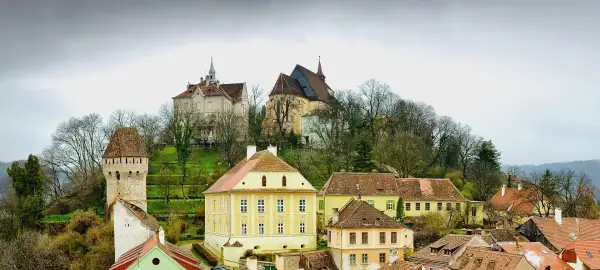Small Group Experiential Travel
Tour Code
RO2 When To Go
May, Sep Start
Bucharest (OTP) End
Sofia (SOF) Countries Visited (2)
Bulgaria, Roma...More > Overnight In (7)
Sofia, Plovdiv...More > Activity Level
2 - Moderate? Tour Type
Cultural? - Overview
- Info & Inclusions
- Itinerary
- Map & Hotels
- Photos
- Dates & Prices
Highlights
- Max Group Size 18
- Bucharest: "The Little Paris of the East"
- The "painted monasteries" of Bucovina
- Bran Castle, mythical home of Dracula
- Famous Valley of the Roses
- Unsurpassed frescoes of Rila Monastery
- Sofia: City tour
- Singles friendly (view options for single travellers)
Description
Explore Romania and Bulgaria's rich history and natural beauty. Discover medieval castles, churches, and painted monasteries. Hike through the Carpathian Mountains and explore ancient towns like Bucharest, Sofia, and Plovdiv. Immerse yourself in the region's diverse cultural influences and witness the enduring legacy of its past.
Price Includes
- Breakfast and dinner (hotels & local restaurants) daily. All transport, sightseeing and entrance fees for sites noted as 'visited' in the detailed itinerary. Gratuities for local guides, drivers, restaurant staff, porters. Airport transfers for land & air customers arriving / departing on tour dates.
Exclusions
- International airfare to/from the tour. Tour Leader gratuities, lunches, drinks, personal items (phone, laundry, etc), domestic and international air taxes (if applicable), excursions referenced as 'optional'. Airport transfers for Land Only customers. Our post-reservation trip notes offer further guidance on optional meal costs and shopping.
Trip Info
- Seasonality and Weather:
This tour is offered in spring, summer and fall the most popular of which is are spring and fall when temperatures are relatively mild and crowds thinner. Showers quite possible in spring and fall, somewhat less so in summer though can occur any time. Summers can be humid though long daylight hours maximize exploration. - Transport and Travel Conditions:
Land transport throughout by private air-conditioned motor coach, 24-36 seats depending on ultimate group size (see 'group size'). Though we will have a couple of full bus days there are plenty of stops of interest. There may not be porters available in all locations. We also make use of public transit in some cities in order to maximize sightseeing where vehicles are impractical (most people quite enjoy this insight into daily life).
This trip is typical of most of our European tours, which are ambitious and involve full days of travel and sightseeing. While we don't have any actual strenuous activity (ie hiking) built into the program, you will do a lot of walking on this trip. These walks will mostly be in the form of walking tours of towns and cities and short walks to dinner. Being Europe, and a hilly/mountainous area, cobbles, uneven surfaces, and slopes/stairs are common. If you are accustomed to typical "bus tours," which rely heavily on vehicular transport for all sightseeing activities, you should be aware that this tour is considerably more active.
Am I suitable for this tour? Please refer to our self-assessment form - Activity Level: 2
These are particularly busy tours that feature a lot of moving around, sometimes by train and short journeys on local transport. Walking tours of towns and cities are leisurely but you should be prepared to be on your feet for several hours. Some of our cultural trips that occur at high altitude and/or require greater independence with baggage handling (at hotels, airports, train stations) also fall into this category.
To learn more about the Activity levels, please visit our tour styles page. - Accommodation:
Well-located, air-conditioned, mid-range hotels (3-4 star) throughout. All hotels have en suite toilet and bath. Porter service is sometimes available; you MUST be independent with your luggage. Single rooms are limited in number and likely smaller than twins. - Staff and Support:
Tour Leader, driver, local step-on guides in various locales. - Group Size:
Maximum 18 plus Tour Leader
View / Print Itinerary
- Day 1:Arrive in BucharestArrive in Bucharest, the capital of Romania.
Overnight in Bucharest.
Included Meal(s): Dinner, if required - Day 2:Bucharest - Sinaia: Peles & Bran Castles - SighisoaraThe Carpathian Mountains rise dramatically as we journey toward Sinaia to visit Peles Castle, considered by many connoisseurs one of Europe's most beautiful castles. This masterpiece of German new-Renaissance architecture was built in the final quarter of the 19th century for Romania's "imported ruler" King Carol I. Designed primarily in German Renaissance style, this summer residence received lavish decoration throughout its 160 rooms from Carol's eccentric wife, Carmen Sylva, creating an extraordinary showcase of royal taste and craftsmanship.
We also visit Sinaia itself, known as the "Pearl of the Carpathian Mountains," where we take a leisurely stroll to the 17th-century Sinaia Monastery. This interesting cluster of churches and courtyards takes its name from the ancient Egyptian monastery on Mount Sinai, reflecting the Orthodox Christian traditions that shaped Romanian spiritual life.
After lunch, we proceed to Bran Castle, dramatically perched atop a rocky outcrop. This strategically located fortress, built in 1377 to protect nearby Brasov from invaders, is erroneously claimed by some to be Count Dracula's castle – though its real history proves far more fascinating than any vampire legend. The castle's rooms and towers surround an inner courtyard, with some chambers connected through underground passages. Bran houses a rich collection of Romanian and foreign furniture and art items from the 14th-19th centuries.
We arrive in Sighisoara as evening settles over this perfectly-preserved medieval city.
Overnight in Sighisoara
Included Meal(s): Breakfast and Dinner - Day 3:Sighisoara, Sibiu & BiertanSibiu, called Hermannstadt in German, was the most important of the 12th-century Saxon settlements in Transylvania. Industrious emigrants, primarily from the Rhineland, the Moselle Valley, Flanders and Saxony, erected protective walls around their prosperous settlement. Though invaders destroyed the first wall, remains of the 15th-century brick fortifications still stand. Because of the blood shed at its walls during Turkish sieges, the unsuccessful Ottoman attackers called Sibiu the "Red City."
Our sightseeing tour reveals Sibiu as one of the oldest towns on the Transylvanian Plateau, where we wander through the old quarter lined with houses featuring immense roofs built within medieval fortifications. This creates Sibiu's powerful medieval atmosphere, enhanced by the massive Evangelical Church that occupies the site where Tartars destroyed the town's first citadel in the 13th century. The church required 200 years to complete during the 14th and 15th centuries.
We continue to Biertan, a former Saxon village south of Sighisoara, where we discover a fortified church from the 15th century, listed as UNESCO World Heritage as representative of Transylvania's unique phenomenon of rural fortified churches. Surrounded by three lines of defence walls reaching 12 metres high and protective towers, this church was never breached by invaders despite numerous sieges.
We return to Sighisoara for a walking tour of this remarkable city. Known as Schassburg in German or Segesvar in Hungarian, Sighisoara stands as the only inhabited Middle Ages city in Europe. The History Museum occupies the former Town Hall, while the 14th-century Clock Tower reveals marvellous views over the entire medieval settlement.
Overnight in Sighisoara
Included Meal(s): Breakfast and Dinner - Day 4:Sighisoara - Bistrita - Gura HumoruluiWe venture deep underground to visit one of Europe's biggest salt mines,* where exploitation has provided an important income source for local inhabitants for hundreds of years. We arrive in the heart of the mountains through a long tunnel (1,500 metres), descending 120 metres below the surface to discover an underground city.
The ionised air possesses therapeutic qualities for those suffering from respiratory ailments, and medical teams organise gym programs and breathing exercises for visitors seeking treatment. This subterranean world contains everything needed for extended stays: treatment facilities, coffee shops, billiards tables, libraries, entertainment areas, and even a chapel where people can pray in this unique underground environment.
After lunch, we continue via Bistrita, founded in the early 13th century by German settlers. Due to its strategic location on the main trading route with Moldavia, Bistrita became one of Transylvania's major medieval cities. Some visitors find additional intrigue in the fact that Bram Stoker mentioned this town in his novel Dracula, though the historical reality proves far more interesting than any fictional vampire tale.
We arrive in Gura Humorului, our perfect base for exploring the Painted Monasteries of Bucovina, where Byzantine-influenced art reached extraordinary heights during the 15th and 16th centuries.
* The mines tend to be susceptible to flooding and may not be available at the time of our visit. If a visit is not possible, we'll substitute the Mining Museum
Overnight in Gura Humorului
Included Meal(s): Breakfast and Dinner - Day 5:Bucovina MonasteriesThe painted monasteries of Bucovina represent triumphs of Byzantine-influenced art, reflecting a remarkable flowering of Moldavian civilisation in the 15th and 16th centuries. These "Painted" Monasteries constitute a major Moldavian destination because of their vivid and animated frescoes covering exterior church walls. UNESCO has declared the Bucovina monasteries as protected cultural sites, with art historians comparing their artistic value to the mural paintings of Venice's San Marco church.
We visit Voronet, a nun monastery consecrated to St. George, within walking distance of Gura Humorului. Voronet probably represents the most accomplished example of artistic achievement in Moldavian architecture and painting, built during a peaceful period when Stephen the Great had centralised the state and given new impetus to its economy and culture. The secrets of Moldavian painters who prepared the colours and techniques that made these paintings incredibly resistant to weather remain mysteries today.
We also explore Humor Monastery, founded in 1530, where exterior frescoes tell biblical stories in vivid detail that common people could understand even if they couldn't read. After visiting the famous Marginea black ceramics centre, where artisans continue traditional pottery techniques passed down through generations, we proceed to Sucevita Monastery, the largest and arguably the finest of the Bukovina monasteries. The church inside the fortified monastic enclosure (1586) displays almost complete fresco coverage inside and out, creating an overwhelming visual experience of medieval religious art.
Overnight in Gura Humorului
Included Meal(s): Breakfast and Dinner - Day 6:Gura Humorului - Cheile Bicazului - Lacu Rosu - BrasovThe spectacular Bicaz Gorges provide our morning's dramatic backdrop as we traverse one of Romania's most breathtaking mountain routes. The road slices through the gorge, twisting and turning steeply uphill for 5 kilometres while cutting through sheer, 300-metre high limestone rocks. At one point, the narrow mountain road runs beneath overhanging rocks in a section known as the "neck of hell," where the gorge becomes so narrow that the cliffs seem to touch overhead.
This remarkable stretch of road enjoys protection as part of the Hasmas-Bicaz Gorges National Park, preserving one of the Carpathians' most spectacular natural formations. A few kilometres west, we cross into Transylvania's Harghita County and immediately encounter the resort area of Lacu Rosu (Red Lake), an alpine destination that developed in the 1970s and continues attracting hikers from both Transylvania and Moldavia.
The lake itself formed in 1837 when an earthquake triggered a massive landslide that dammed the Bicaz River, creating this scenic mountain lake surrounded by dramatic peaks. The area's name derives from the reddish sediment that gives the water its distinctive colour, particularly striking during certain light conditions. We break for lunch in this pristine mountain setting before continuing our journey to Brasov.
Overnight in Brasov
Included Meal(s): Breakfast and Dinner - Day 7:Brasov: Town Tour - Bucharest: City TourBrasov, known as Kronstadt in German and Brasso in Hungarian, ranks as Romania's second-largest city after Bucharest. The Old Town nestles between two mountains, surrounded like a protective embrace by the Carpathians. Here we visit the Black Church, Gothic architecture's largest achievement in southeastern Europe.
We then depart for Bucharest, arriving in time for lunch before beginning our comprehensive sightseeing program in Romania's capital. Founded 500 years ago, Bucharest serves as the nation's powerhouse of cultural and economic life. During the 1930s, its tree-lined boulevards and fin de siècle architecture earned it the nickname "The Little Paris of the East," a comparison emphasised by its own Arc de Triomphe on the handsome Soseaua Kiseleff – itself longer than the Champs Élysées and alive with blossoms in spring.
Despite massive reconstructions during the 1980s, Bucharest remains a "Garden City," leafy and pleasant, with numerous sidewalk cafes creating a distinctly European atmosphere. Our tour includes the Cotroceni Palace and Museum, the Triumphal Arch, the Romanian Athenaeum with its magnificent dome, and University Square. We conclude with a visit to the Bucharest Village Museum, situated in a picturesque lakeshore environment as one of Europe's largest and oldest outdoor museums. Its exhibits – including houses, churches, water mills and windmills – possess great historic and artistic value, representing rural Romanian life across the centuries.
* NOTE: We always attempt to include the Palace of the Parliament; however, the facility frequently closes to visitors for official purposes/events, often without notice.
Overnight in Bucharest
Included Meal(s): Breakfast and Dinner - Day 8:Bucharest, Romania - Fly to Sofia, BulgariaSofia, Bulgaria's capital, largely presents itself as a city of wide boulevards and squares, pleasant parks, and enormous Socialist Realism-style buildings. In the 5th century BC, Sofia was the Thracian city of Serdika, and when Romans conquered Thrace, they made it their capital. Attila the Hun's hordes set it ablaze in the 5th century AD, after which Justinian rebuilt it as an important Byzantine stronghold.
NOTE: The timing of today's flight will determine whether we have free time in Bucharest or Sofia.
Upon arrival in Sofia, we settle into our accommodations and begin our introduction to this ancient city where Thracian, Roman, Byzantine, Ottoman, and modern Bulgarian influences create a fascinating cultural mosaic. The wide boulevards reflect 19th-century urban planning, while archaeological sites scattered throughout the city centre reveal layers of two millennia of continuous habitation.
Overnight in Sofia.
Included Meal(s): Breakfast and Dinner - Day 9:Sofia & Rila MonasteryWe journey 121 kilometres south of Sofia through high rock walls with formations like giant animals waiting to pounce, arriving at the 10th-century Rila Monastery nestled in soft, green woods. Mountains rise all around this most-revered of Bulgarian monasteries, while below, the Rilska River races over a stony bed through pristine wilderness.
In the 9th century, twenty-year-old Ivan Rilski (John of Rila) fled to this peaceful place seeking escape from worldly corruption. Finding a cave in the woods above the present monastery site, he embraced the hermit life, feeding animals and birds while praying in the stillness. Like-minded men eventually joined him, building the first monastery about 2.4 kilometres from the present site, where today you can visit his tomb, the little Church of St. Luke, and the cave he inhabited.
Rila Monastery ranks among Europe's largest monasteries, located in some of Bulgaria's most beautiful terrain. Our exploration features the unsurpassed frescoes of the Church of the Blessed Virgin, where monks still practice within this five-domed treasure. The exquisite fortress-like walls also contain the Historical Museum, featuring objects connected with the monastery's thousand-year history, including precious manuscripts, woodcarvings, and ecclesiastical treasures.
After lunch, we return to Sofia for a visit to the National Museum of History, providing an excellent introduction to Bulgarian culture, from ancient Thracian gold treasures to medieval manuscripts to folk traditions that survive today.
Overnight in Sofia.
Included Meal(s): Breakfast and Dinner - Day 10:Sofia - PlovdivWe travel to ancient Plovdiv, situated in the Plain of Thrace, where history unfolds in layers across three dramatic hills. Plovdiv was formerly known as Pulpudeva until Philip II of Macedon's weary horse collapsed beneath him at the edge of the Thracian plain in 342 BC. Taking this as an omen, he built Philippolis on the site in his horse's honour. Later Romans renamed it Trimontium – the City on Three Hills – while five centuries of Turkish rule (when it was known as Philibe) brought significant changes to its character.
Today Plovdiv charms visitors with its lovely "stariyat grad" (old town), displaying Turkish influences alongside a distinctive Bulgarian character. Our tour explores the Old Quarter, the Ethnographical Museum housed in a beautifully preserved 19th-century mansion, and the remarkably well-preserved Roman Amphitheatre, still used for performances during summer festivals.
Within Trimontium, the historic heart of Plovdiv, typical 19th-century Bulgarian homes line cobblestoned streets, their overhanging upper floors and painted facades creating one of the Balkans' most photogenic neighbourhoods. The revival-period architecture reflects the prosperity of 19th-century Bulgarian merchants who traded throughout the Ottoman Empire while maintaining their cultural identity.
Overnight in Plovdiv
Included Meal(s): Breakfast and Dinner - Day 11:Plovdiv - Valley of the Roses - Veliko TarnovoThe world-famous Valley of the Roses unfolds before us, where 70 percent of the world's "attar" (rose extract) is produced in fields that transform into a pink carpet during May and June harvest season. Nimble-fingered women and girls do most of the picking in the early morning hours, while donkeys carry the precious petals to distilleries where the ancient art of rose oil production continues unchanged for centuries.
In Kazanlak, we visit the Thracian Tomb (4th-3rd centuries BC), a UNESCO World Heritage site representing the original Bulgarians' sophisticated burial customs. The Thracians, closely linked with ancient Greeks, created this underground chamber decorated with remarkable frescoes that survive as masterpieces of ancient art.
Before crossing the spectacular Shipka Pass with its majestic vistas and momentous history, we visit the Shipka Memorial Church, where golden domes rise from the hillside in Russian style, commemorating Bulgarian and Russian soldiers who died fighting for Bulgarian independence. The open-air Ethnographical Museum of Etura recreates a typical 19th-century village, where traditional crafts and rural life continue in authentic workshops and homes.
We arrive in Veliko Tarnovo, once Bulgaria's capital (1185-1396) and still displaying remains of its past glory through fortress walls and palaces perched among steep cliffs of the Yantra Gorge. This capital of the Second Bulgarian Kingdom rises on three main hills: fortified Tsarevets; Trapezitsa, where boyars lived; and Sveta Gora, once a scholarly monastery centre, now a university site.
Overnight in Veliko Tarnovo
Included Meal(s): Breakfast and Dinner - Day 12:Veliko Tarnovo: Town TourWe explore this town laced with history through our tour of the commanding Tsarevets Citadel (Castle of the Czar), first fortified in the 6th century and evolved into the royal centre of the Second Bulgarian Kingdom by the 12th century's end. The breathtaking views from this picturesque region reveal why medieval Bulgarian rulers chose this dramatic setting for their capital.
A short drive brings us to the hilltop village of Arbanassi, first settled by Albanian immigrants in the 15th century. Here we visit several houses dating from the 16th and 17th centuries, their thick stone walls and hidden courtyards reflecting the uncertain times when wealthy merchants needed to protect their families and fortunes from bandits and tax collectors.
These remarkable houses demonstrate how Bulgarian Christians maintained their prosperity and culture during Ottoman rule, creating architectural gems that blend Bulgarian, Byzantine, and Ottoman influences. The Church of the Nativity contains some of Bulgaria's finest religious frescoes, painted when the village served as a summer retreat for wealthy Bulgarians.
The afternoon offers leisure time to absorb the medieval atmosphere of Veliko Tarnovo, perhaps exploring artisan shops or enjoying coffee while watching the Yantra River wind through the dramatic gorge below the ancient fortress.
Overnight in Veliko Tarnovo
Included Meal(s): Breakfast and Dinner - Day 13:Veliko Turnovo - SofiaThe beautiful Danube Plain provides our scenic route back to Sofia as we cross the Troyan Pass and visit the nearby Troyan Monastery, Bulgaria's third largest. This spiritual centre, founded in the 17th century, houses remarkable frescoes and wood carvings that represent the pinnacle of Bulgarian religious art during the National Revival period.
After lunch, we continue to the well-preserved "museum-town" of Koprivshtitsa, where the revolt against Ottoman occupation began in 1876. This historic town preserves an invaluable collection of 19th-century Bulgarian architecture, when wealthy merchants built elaborate houses that celebrated Bulgarian identity through distinctive design and decoration.
Our walk through this enchanting town reveals unique houses with wooden columns, painted facades, richly decorated interiors, and lovely gardens that create a living museum of Bulgarian Renaissance culture. Each house tells stories of the families who lived here during Bulgaria's struggle for independence, when education, culture, and commerce flourished despite political oppression.
The architectural ensemble of Koprivshtitsa demonstrates how Bulgarians expressed their national awakening through art, literature, and architecture, creating a distinctive style that blended traditional Bulgarian elements with cosmopolitan influences from across Europe.
Overnight in Sofia
Included Meal(s): Breakfast and Dinner - Day 14:Sofia: City SightseeingSofia's motto proclaims "Sofia Grows but Never Ages," reflecting a city founded over 7,000 years ago that today serves as an exciting meeting place of history and modernity. Traces of Thracian and Roman lives, Proto-Bulgarian and Slavic cultures create layers visible throughout the contemporary city, while more than 250 historic, archaeological and architectural monuments preserve Sofia's role as the centre of Bulgarian political and cultural life.
Our walking tour reveals Sofia's most famous landmarks, beginning with the magnificent St. Alexander Nevsky Cathedral, one of the city's most spectacular buildings. Beyond the splendour of the building itself, the cathedral houses remarkable icons and murals painted by the era's foremost artists, while its crypt contains Bulgaria's most valuable collection of medieval icons spanning centuries of religious art.
St. Sofia's Church, the second oldest but most significant building in the city, gave Sofia its name and stands as a remarkable archaeological monument witnessing Serdica's golden age during the 6th century. The large archaeological complex of Roman and medieval ruins, dominated by St. George Rotunda, preserves Sofia's oldest building. Repeatedly destroyed and rebuilt, the 5th-century St. George Rotunda has been restored to its original appearance as a Christian church, its circular walls containing frescoes from multiple historical periods.
The remainder of the afternoon invites independent exploration of this fascinating capital, where ancient ruins neighbour contemporary galleries, traditional restaurants serve dishes perfected over centuries, and modern Sofia continues its eternal dance between past and future.
Overnight in Sofia
Included Meal(s): Breakfast and Dinner - Day 15:DepartureDeparture from Sofia.
As we bid farewell to our fellow travellers and this land of endless discoveries, we carry with us memories of spectacular landscapes, architectural treasures, and the warm hospitality of peoples whose cultures have endured and flourished despite centuries of challenge and change.
PRIJATNO PATUVANE!! (Pleasant Journey in Bulgarian!)
Included Meal(s): Breakfast
Regions Visited: Eastern Europe
Countries Visited: Bulgaria and Romania
Countries Visited: Bulgaria and Romania
*The red tour trail on the map does not represent the actual travel path.
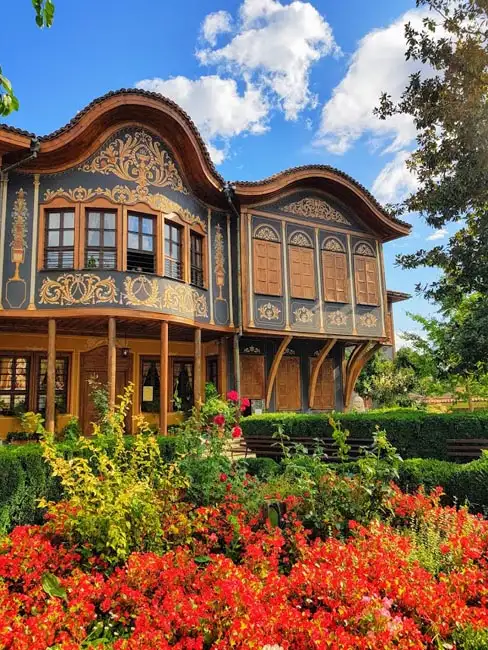
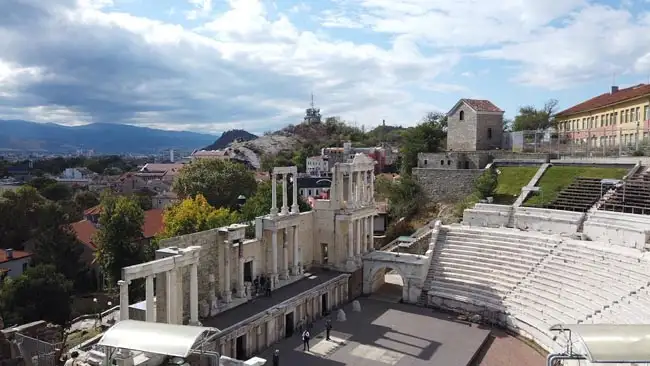
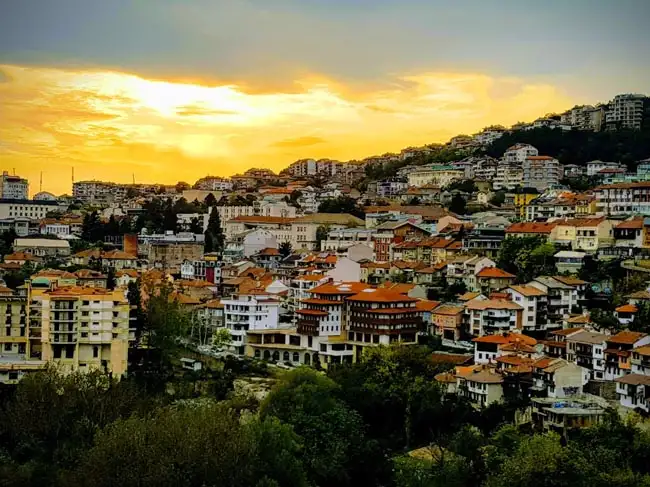
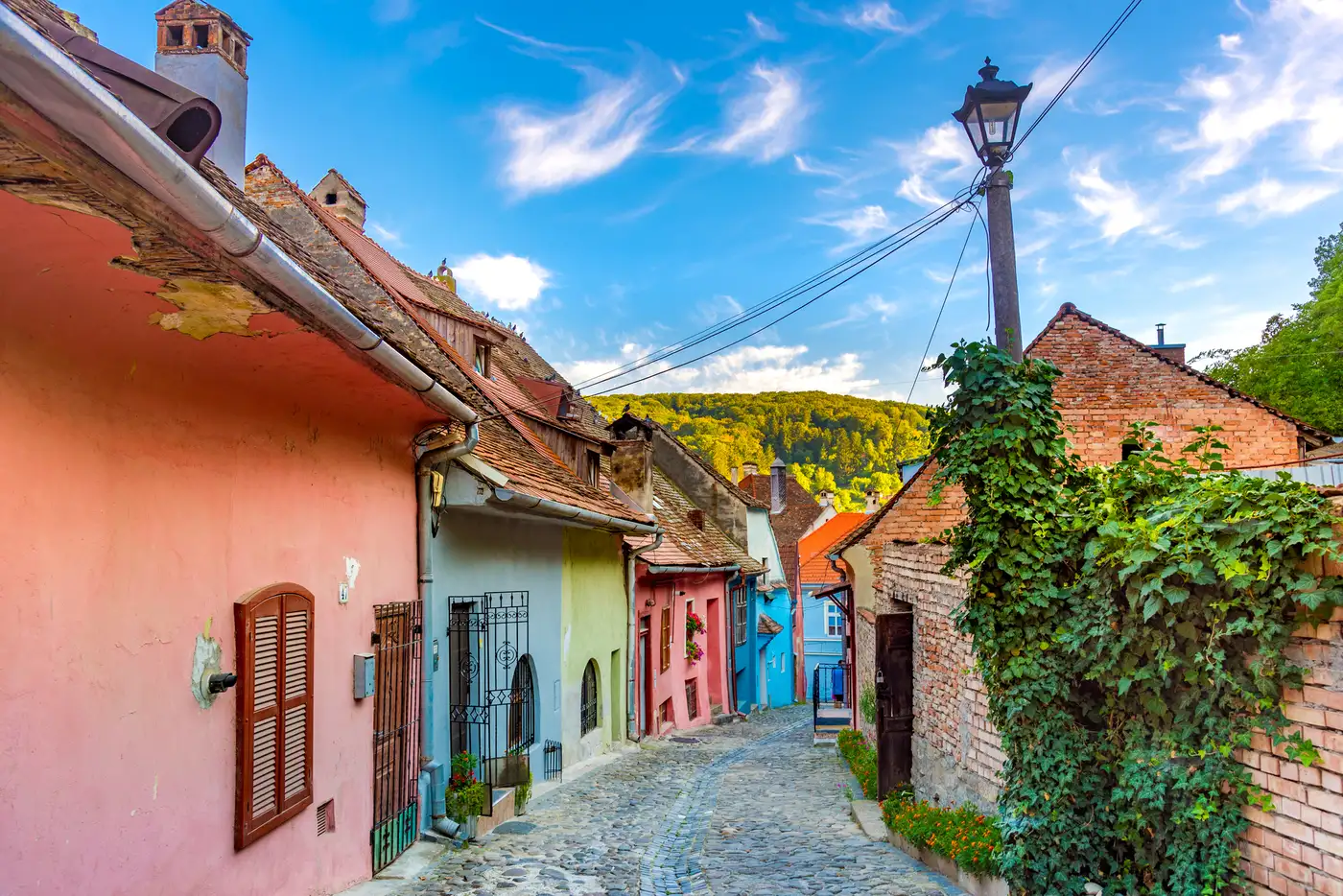
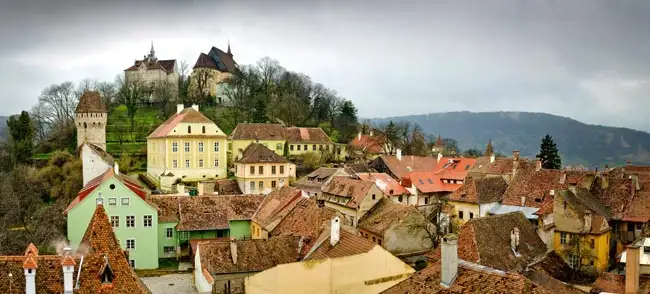
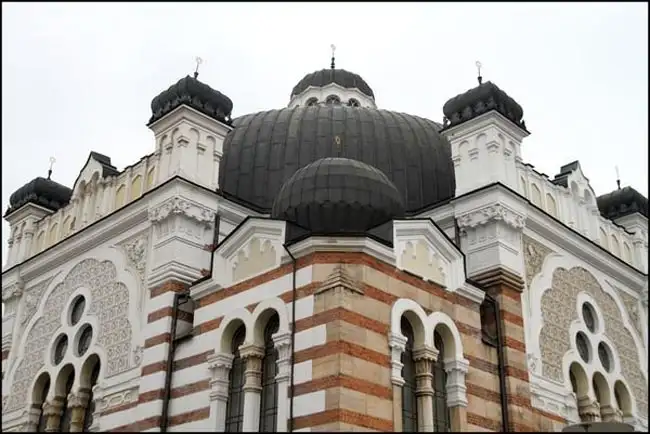
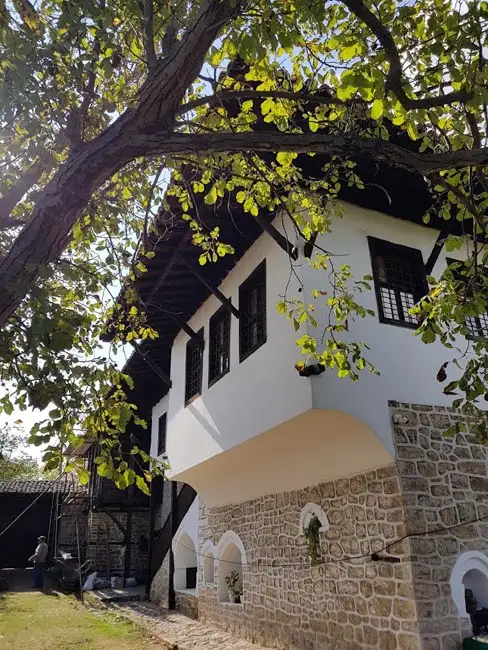

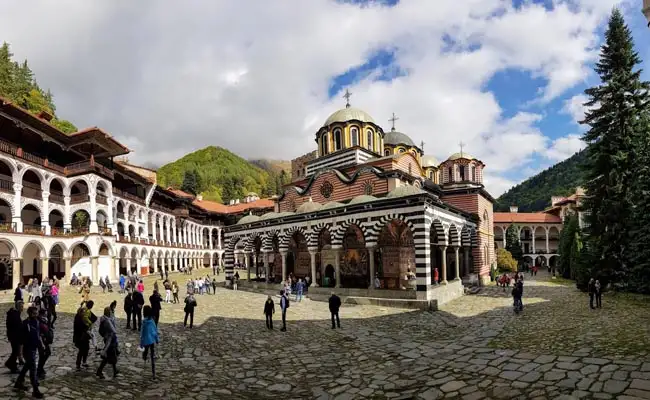
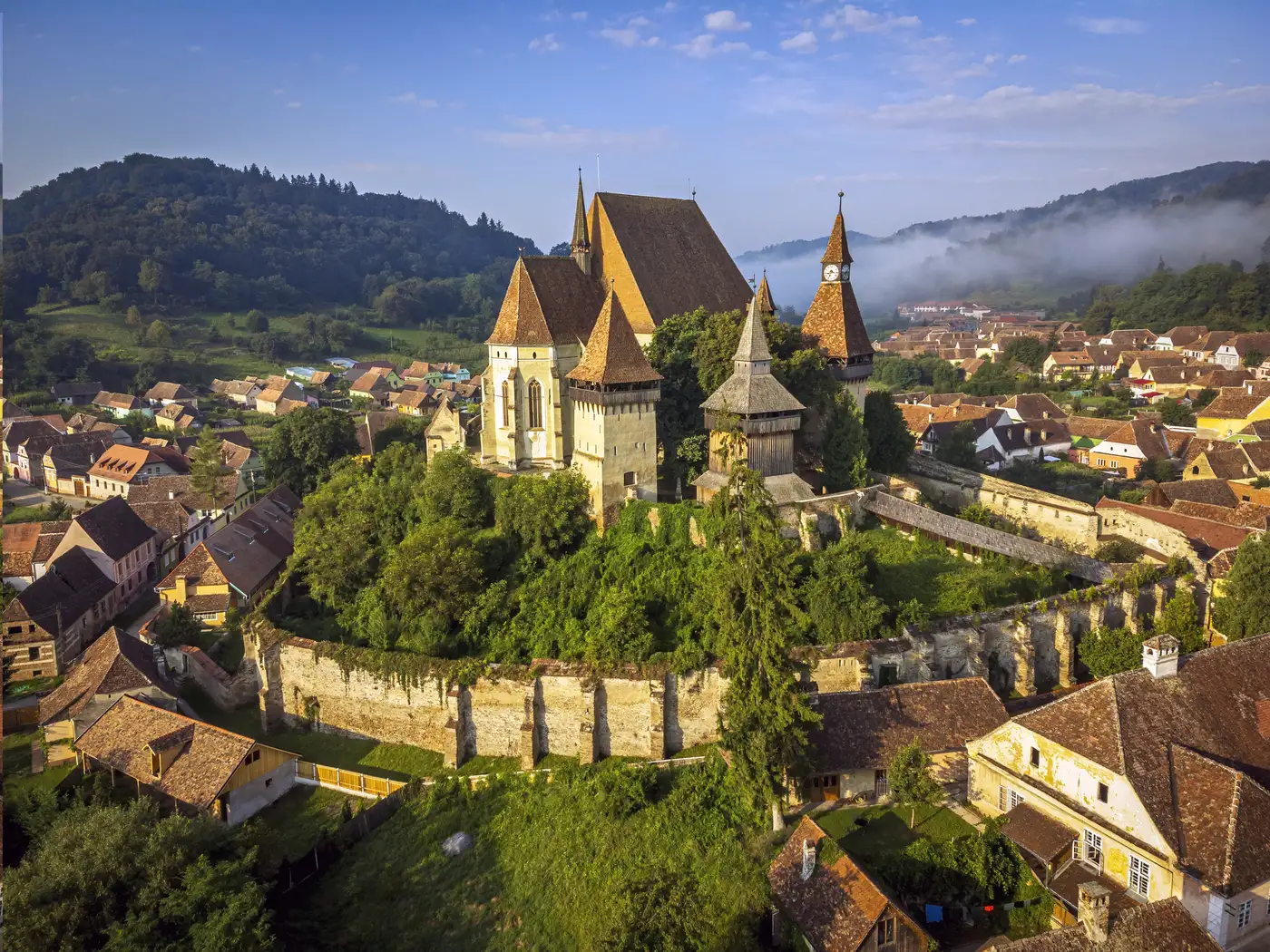
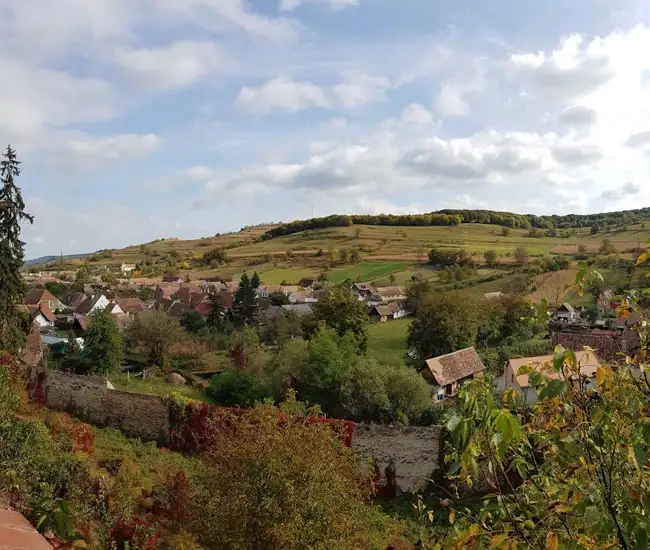
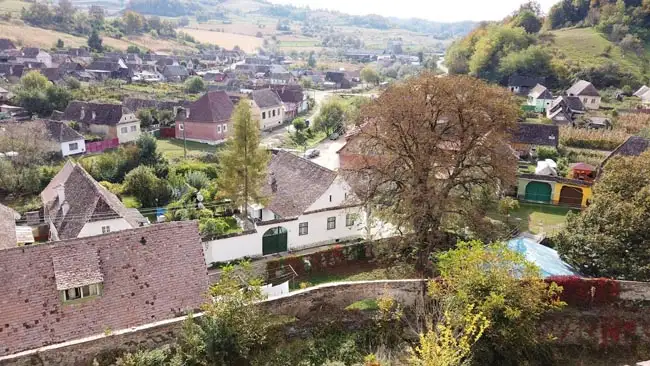

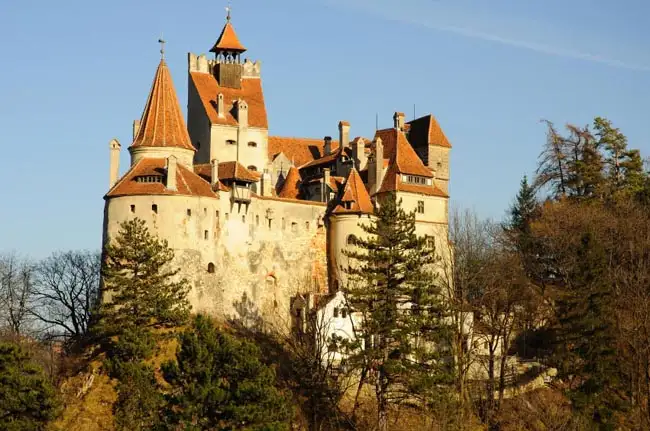
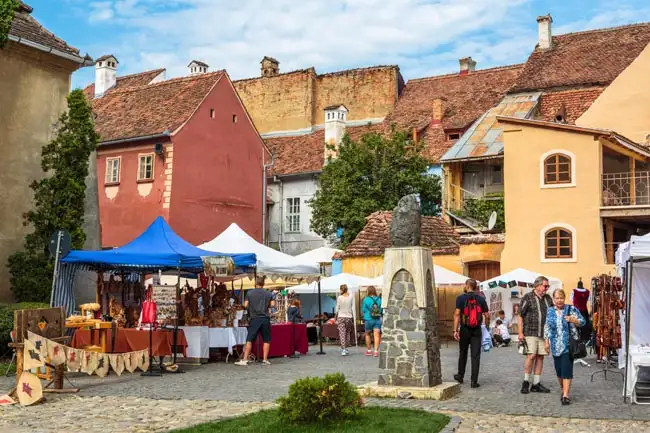
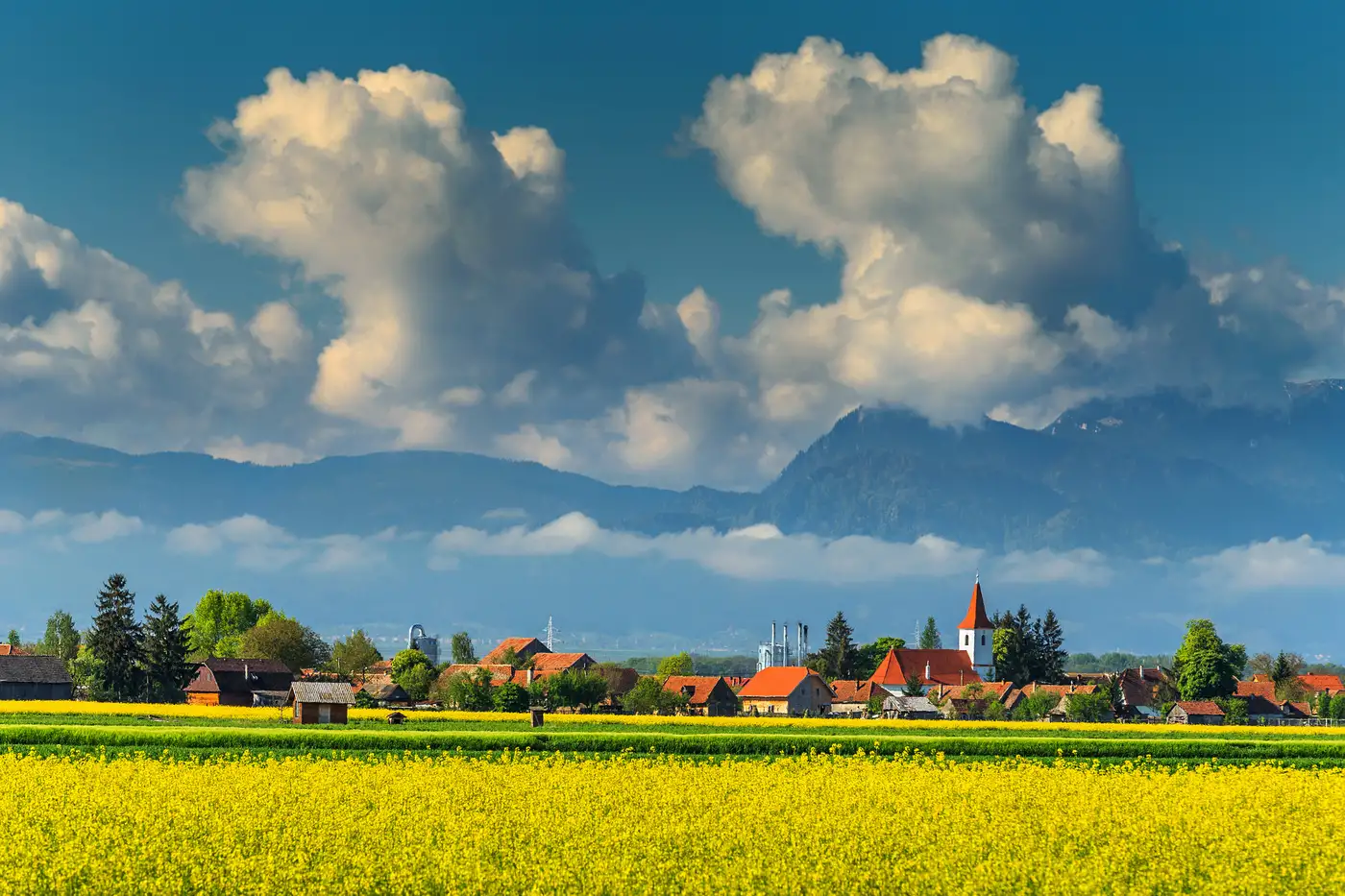
Excellent
Overall Rating
4.7
Extend Your Trip
This tour is part of a series that can be upgraded to make for a longer trip.
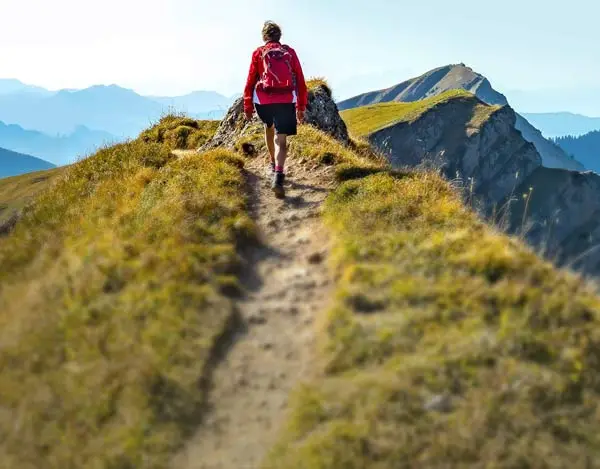
Fast and easy
Book This Tour
Book your unforgettable adventure today! For any questions or advice, don't hesitate to contact us.
Have questions?
1-800-665-3998
- Final payment: Due 90 days prior to departure.
- Deposit: A non-refundable $500 USD Deposit is required at booking.
- Optional Single Supplement: $1040 USD (number of singles limited).
(View options forsingle travellers) - Transfering Tour or Date: Transferring to another tour or tour date is only permissible outside of 120 days prior to departure and is subject to a $100 USD change fee.
(Read our cancellation policy)
Choose your departure date:
Prices below are per person, twin-sharing costs in US Dollars (USD). Pricing does not include airfare to/from the tour and any applicable taxes.
Prices below are per person, twin-sharing costs in US Dollars (USD). Pricing does not include airfare to/from the tour and any applicable taxes.
Frequently Asked Questions
- What is the maximum number of participants on a trip?Most of our tours carry a maximum of 18 participants; some tours (ie hiking tours) top out at 16. In the event that we do not achieve our minimum complement by our 90-day deadline, we may offer group members the option of paying a "small-group surcharge" as an alternative to cancellation. If all group members agree, we will confirm the trip at existing numbers; this surcharge is refundable in the event that we ultimately achieve our regular minimum. If the small group surcharge is not accepted, we will offer a refund of your deposit or a different trip of your choice.
- Can I extend my tour either at the beginning or end? What about stopovers?Yes, you can extend your tour either at the beginning or the end and we can book accommodation in our tour hotel. Stopovers are often permitted, depending on air routing. Stopovers usually carry a "stopover" fee levied by the airline.
- How do I make a reservation? How and when do I pay?The easiest way to make a reservation is via our website; during office hours, you are also more than welcome to contact us by telephone.
A non-refundable deposit is payable at the time of booking; if a reservation is made within 90 days, full payment is required. Some trips require a larger deposit. If international airline bookings require a non-refundable payment in order to secure space or the lowest available fare, we will require an increase in deposit equal to the cost of the ticket(s).
Early enrolment is always encouraged as group size is limited and some trips require greater preparation time.
Once we have received your deposit, we will confirm your space and send you a confirmation package containing your trip itinerary, any visa/travel permit related documents, invoice, clothing and equipment recommendations, general information on your destination(s), and forms for you to complete, sign and return to us. Your air e-tickets (if applicable), final hotel list, final trip itinerary, and instructions on how to join your tour, will be sent approximately 2-3 weeks prior to departure. - What about cancellations, refunds, and transfers?Please review our cancellation policy page for details.
- I am a single who prefers my own room. What is a single supplement?All of our tours have a single supplement for those who want to be guaranteed their own room at each location.
This supplement is a reflection of the fact that most hotels around the world do not discount the regular twin-share rate for a room by 50% for only one person occupying a room. Most hotels will give a break on the price, but usually in the range of 25-30% of the twin-share rate. This difference, multiplied by each night, amounts to the single supplement.
The conventional amount can also vary from country to country and some destinations are more expensive than others for single occupancy. In order to be "single friendly," the supplements we apply are not a profit centre for us and we do our best to keep them as reasonable as possible.
On most tours we limit the number of singles available, not to be punitive, but rather because many hotels allow for only a limited number of singles; some smaller hotels at remote locations also have a limited number of single rooms available.
Please note that most single rooms around the world are smaller than twin-share rooms and will likely have only one bed. - Do you have a shared accommodation program?Yes! If you are single traveller and are willing to share, we will do our best to pair you with a same-gender roommate. On most of our tours, if we fail to pair you, we will absorb the single supplement fee and you will default to a single room at no extra charge. At some destinations, however, where single rooms are not significantly discounted, or not at all, we may apply a "mandatory" single in the event that we cannot find you a share partner. This is usually 50% of the usual supplement, but can be as much as 100%. If applicable, this proviso will be noted on each tour page on this website, on your invoice, and in our tour date/price book (available for download under "Resources").
